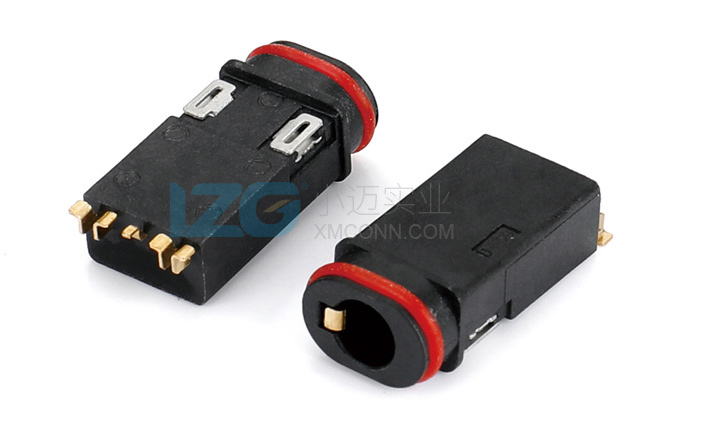The application of headphone sockets in today's industry is very wide, such as computer equipment, mobile devices, medical equipment, audio equipment, and electronic instrument equipment, etc. These all require the use of headphone sockets, and there are many differences in the specifications and types of headphone sockets, such as 2.5mm and 3.5mm headphone sockets, etc. So how much do you know about headphone sockets?
The structure of the headphone socket
Headphone sockets are generally composed of multiple contacts and socket structures, which mainly include headphone plugs, sockets, and conductive sheets. Firstly, for the headphone socket, there is a central plug on the headphone plug, followed by an auxiliary plug on both sides. There are two or more sets of metal plates on both sides of the auxiliary plug. However, there is a circular plug hole in the center of the headphone socket, which serves as the connecting part of the headphone plug column. The conductive piece of the headphone socket also has a curved contact part, which can contact the metal pieces located on both sides of the auxiliary plug, forming effective conductive contact and providing an independent transmission. However, at the same time, auxiliary plug holes are also installed on both sides of the headphone socket, relative to the auxiliary plug column. In addition, there are two opposite conductive pieces inside the auxiliary headphone plug plug holes.

The internal structure of the headphone socket
Open the panel of the switch and you can see the internal structure of the switch and socket. As for switches, pure silver contacts and conductive sheets made of silver copper composite materials should usually be used to prevent oxidation caused by arc during opening and closing.
The conductive bridge of high-quality panels is made of silver nickel copper composite material. Silver material has excellent conductivity, while silver nickel alloy has a very strong ability to suppress arcs, which ensures that Qisheng's switch can be opened and closed more than 80000 times, far exceeding the international standard of 40000 times. The switch adopts brass screws for wire pressing, with a large and good contact surface, strong wire pressing ability, and stable and reliable wiring. SMT power socket single hole wiring copper pillar, with large wiring capacity, not limited by wire diameter thickness. In addition, the product panel is reserved with 6-8 (upper, lower, left, right, and four corners) fixed installation holes, which are free and flexible, suitable for various installation needs.



